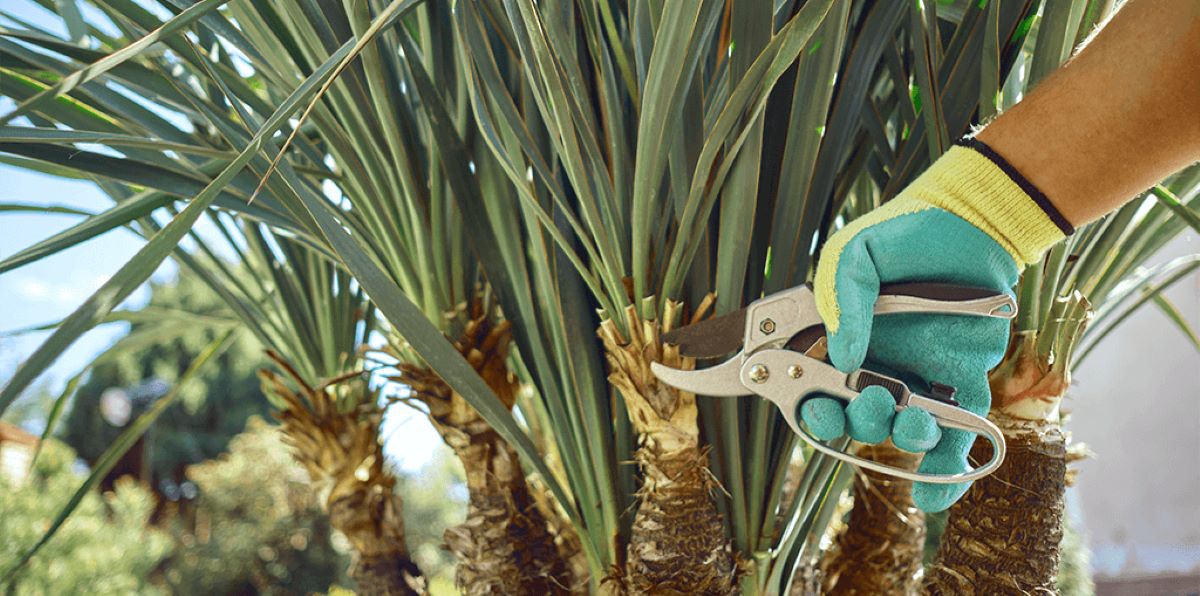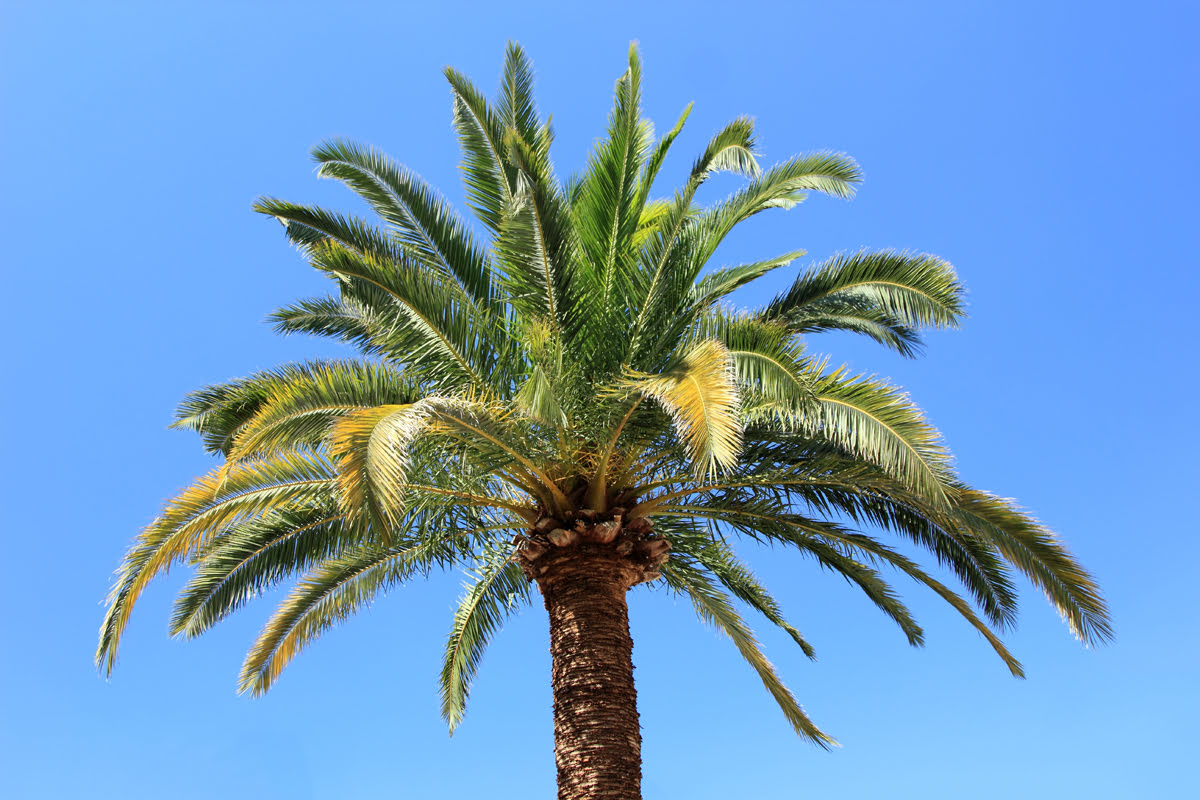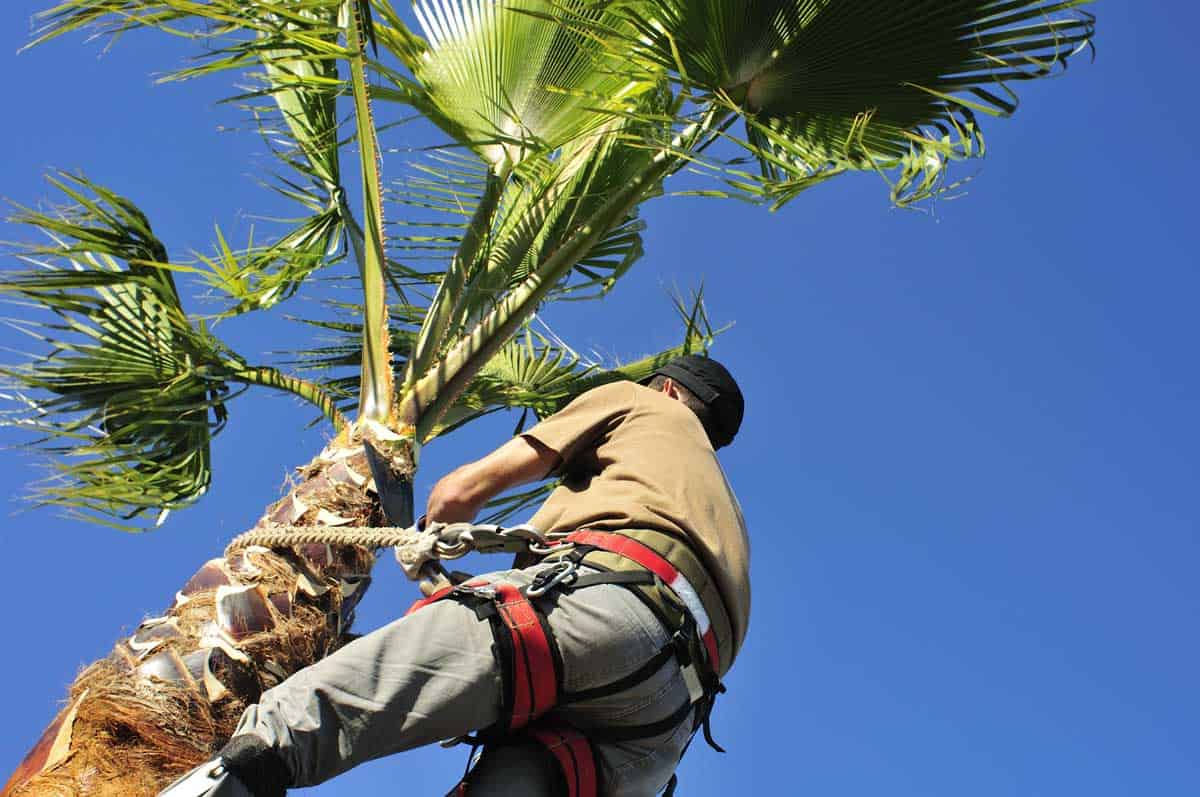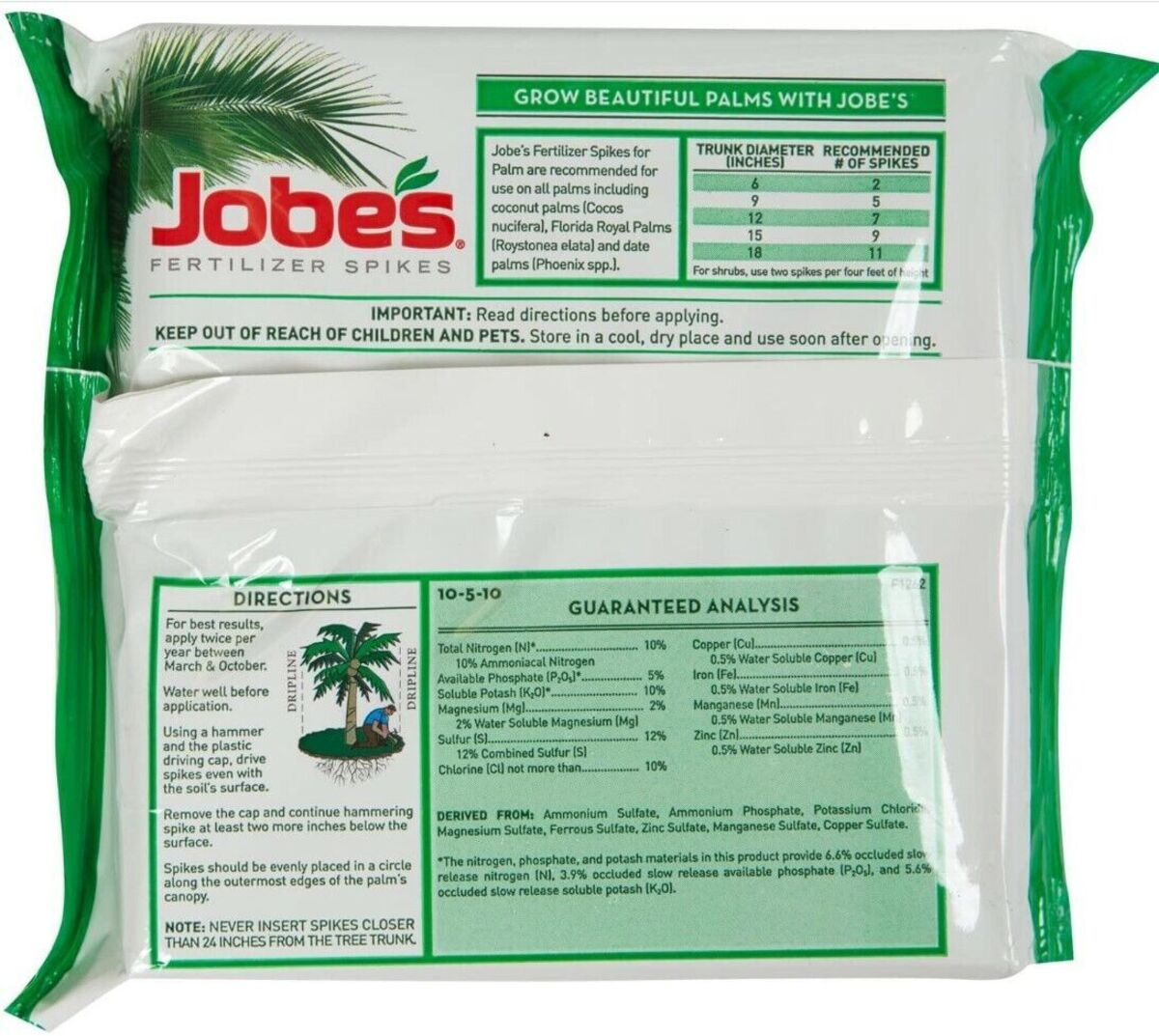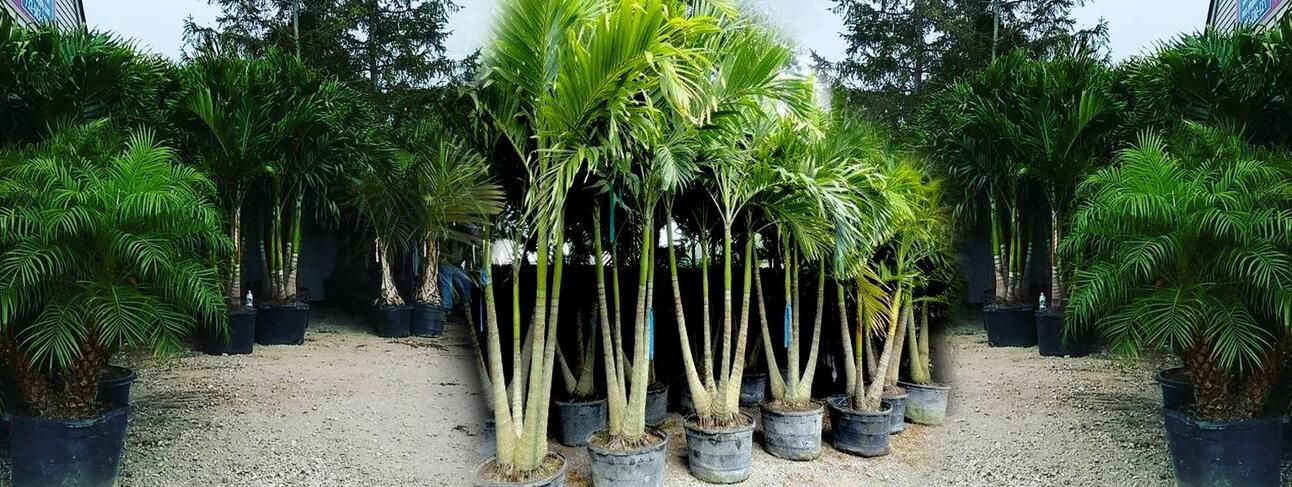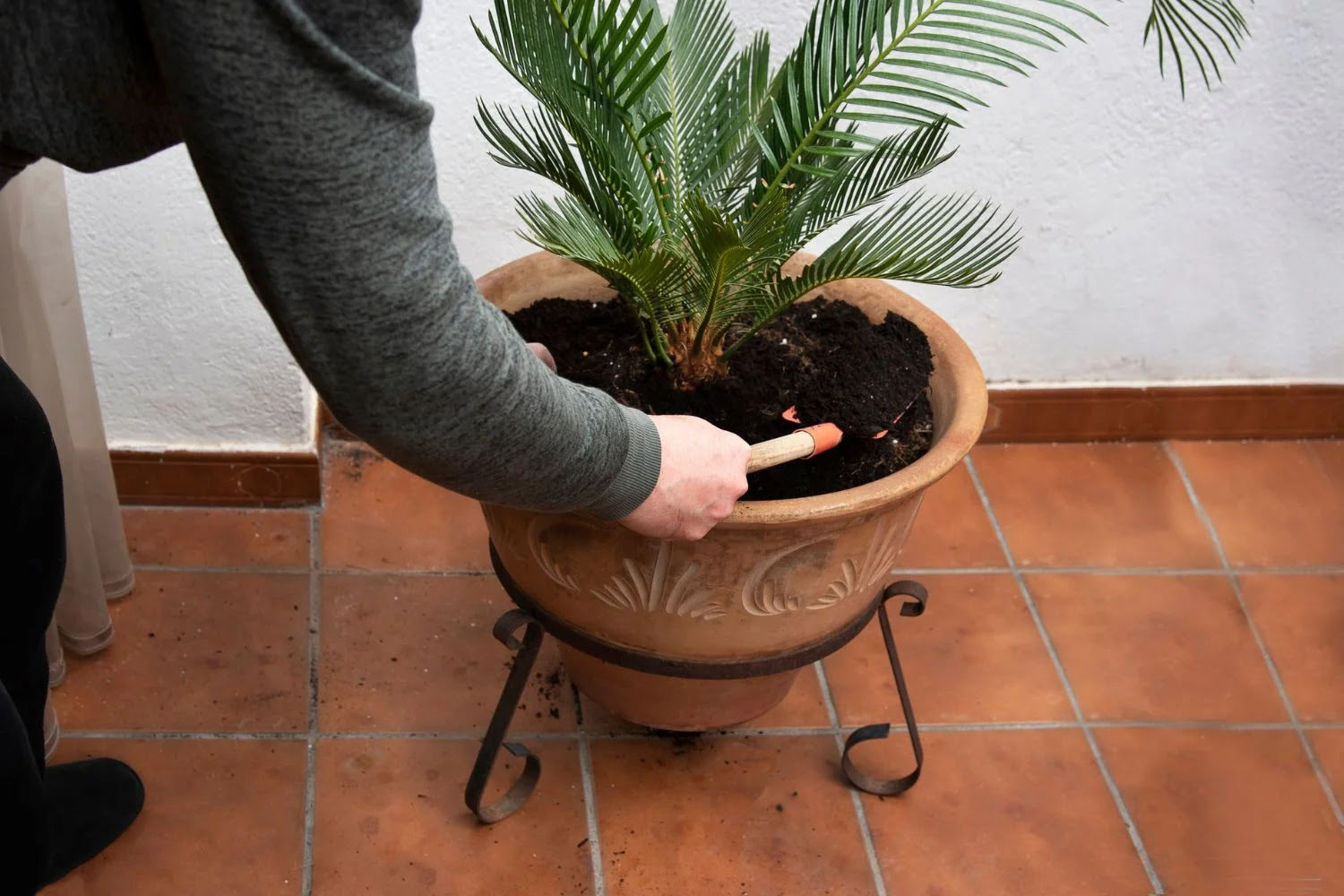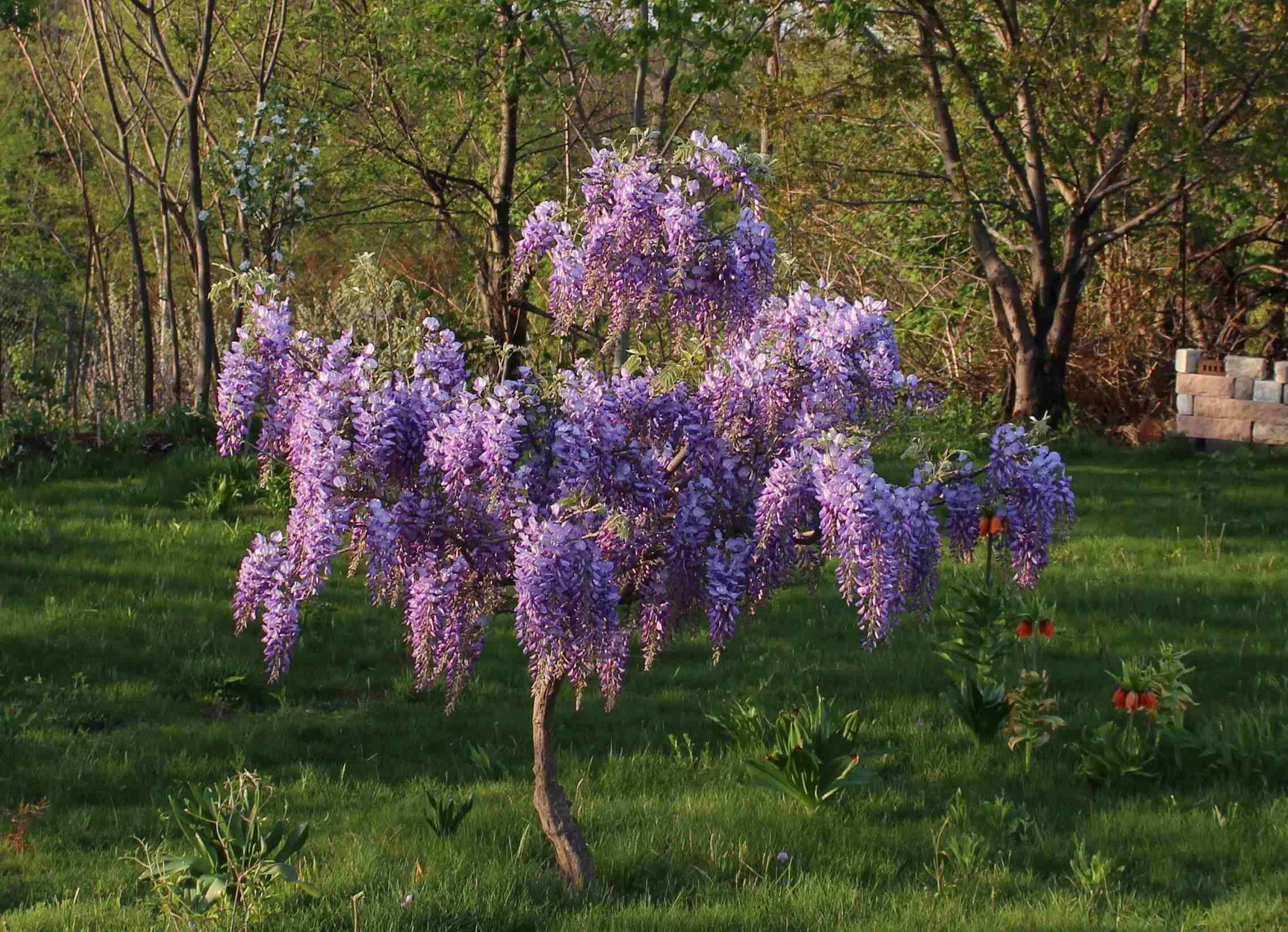Home>Types of Gardening>Edible Gardening>How To Plant Palm Tree Seeds
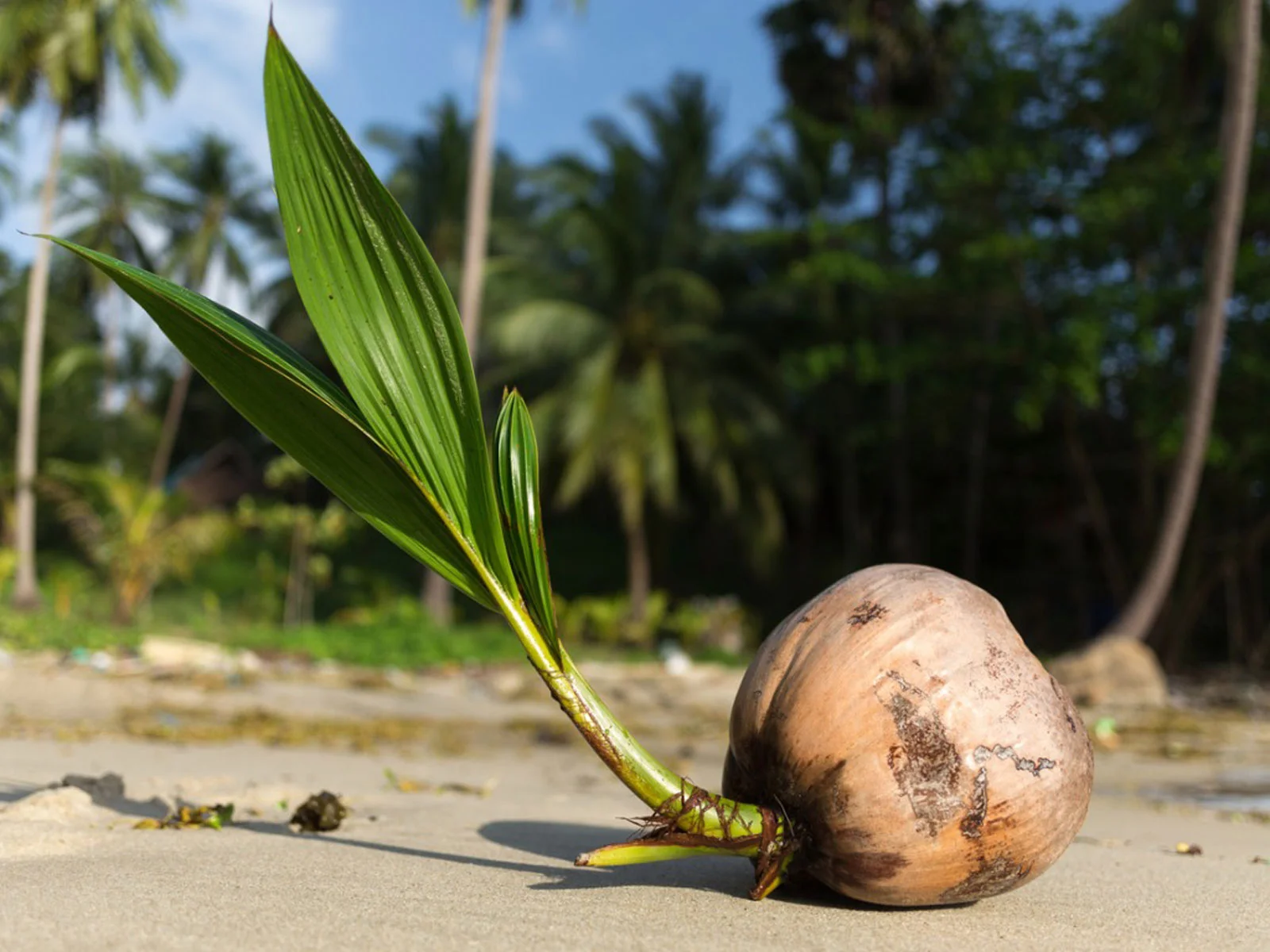

Edible Gardening
How To Plant Palm Tree Seeds
Modified: January 22, 2024
Learn how to grow palm trees from seeds in your own garden with our step-by-step guide. Discover the joy of edible gardening and create a lush oasis with these valuable tips!
(Many of the links in this article redirect to a specific reviewed product. Your purchase of these products through affiliate links helps to generate commission for Chicagolandgardening.com, at no extra cost. Learn more)
Table of Contents
Introduction
Welcome to the world of edible gardening, where you can grow your own delicious and nutritious food right in your backyard. Edible gardening has become increasingly popular in recent years as people are becoming more aware of the benefits of growing their own fruits, vegetables, and herbs.
One of the most rewarding aspects of edible gardening is the ability to plant and nurture your own palm trees. Not only do palm trees add a touch of tropical appeal to your garden, but they also provide an abundance of nutritious and versatile produce. From coconuts to dates, palm trees offer a variety of options for the adventurous gardener.
In this article, we will guide you through the process of planting palm tree seeds and ensuring their successful growth. Whether you are a beginner or an experienced gardener, these step-by-step instructions will help you cultivate thriving palm trees and enjoy the fruits of your labor.
Before we dive into the details, it’s important to note that different varieties of palm trees have varying requirements in terms of climate, soil conditions, and care. Therefore, it’s crucial to research the specific type of palm tree you intend to grow, ensuring that it is suitable for your region and gardening capabilities.
Now, let’s gather our materials and get ready to embark on an exciting journey of edible gardening with palm trees!
Step 1: Gathering Materials
Before you start planting palm tree seeds, it’s important to gather all the necessary materials. Having everything you need at hand will streamline the process and make it more efficient. Here are the essential materials you’ll need:
- Palm tree seeds: Acquire fresh palm tree seeds from a reputable source. Depending on the specific palm tree variety you wish to grow, you may need to purchase the seeds online, from a local nursery, or even harvest them yourself if you have access to mature palm trees.
- Growing medium: Choose a high-quality potting mix or make your own using a combination of organic compost, perlite, and sand. Palm trees thrive in well-draining soil that retains moisture without becoming waterlogged.
- Pots or containers: Opt for containers with drainage holes to ensure proper water drainage. The size of the pot should be adequate to accommodate the size of the seed and allow room for root growth.
- Watering can or spray bottle: Invest in a watering can or spray bottle to help regulate the moisture levels of the potting mix. Palm trees prefer consistent moisture without being excessively soaked.
- Transparent plastic bag: This will be used as a mini greenhouse to create a warm and humid environment for the palm tree seeds to germinate.
- Plant labels or markers: It’s helpful to label your pots or containers with the palm tree variety and the date of planting. This will ensure that you can easily track the growth progress and identify the different palm trees.
It’s important to note that specific palm tree varieties may require additional materials or specialized tools. Research the particular palm tree you are planting to ensure you have everything you need for a successful growth journey.
Once you have gathered all the materials, you are ready to move on to the next step: preparing the palm tree seeds for planting.
Step 2: Preparing the Palm Tree Seeds
Properly preparing the palm tree seeds is crucial for their successful germination and growth. Here are the steps to follow:
- Seed cleaning: Start by cleaning the palm tree seeds to remove any fruit remnants, dust, or debris. Gently rinse the seeds under running water and pat them dry with a clean cloth or paper towel.
- Seed soaking: Many palm tree seeds benefit from soaking before planting. Fill a bowl with room-temperature water and place the seeds in it. Allow them to soak for 24 to 48 hours, changing the water every 12 hours or so. This soaking process helps soften the seed coat and promotes germination.
- Seed scarification: Some palm tree seeds have a hard seed coat that can hinder germination. To overcome this, you can scarify the seeds using sandpaper or a nail file. Gently rub the seed coat until you see a slight break or dullness in the surface. Be careful not to damage the inner part of the seed.
- Seed stratification (optional): Certain palm tree seeds require a period of cold stratification to simulate natural winter conditions and break seed dormancy. To do this, place the scarified seeds in a damp paper towel, seal them in a plastic bag, and refrigerate them for several weeks.
It’s important to note that not all palm tree seeds require scarification or stratification. Research the specific variety of palm tree you are planting to determine if these steps are necessary.
Once you have prepared the palm tree seeds, it’s time to move on to the next step: planting them in suitable containers with the right growing medium.
Step 3: Planting the Palm Tree Seeds
Now that your palm tree seeds are prepared, it’s time to plant them in suitable containers with the right growing medium. Follow these steps:
- Container selection: Choose a pot or container that is at least 6 inches deep and has drainage holes to allow excess water to escape. Ensure the container is large enough to accommodate the size of the seed and leave room for root growth.
- Growing medium preparation: Fill the container with a well-draining potting mix. You can also create your own mix by combining equal parts of peat moss, perlite, and vermiculite. Avoid using heavy soils that may retain too much moisture and lead to root rot.
- Planting the seeds: Make a small hole in the center of the container, approximately 1 inch deep. Place a single seed in the hole and cover it gently with the potting mix. Avoid planting the seeds too deeply, as this can impede germination.
- Moistening the soil: After planting the seeds, lightly water the container to moisten the soil. Be careful not to overwater, as excessive moisture can cause the seeds to rot. Aim for a consistently moist but not soggy growing medium.
- Labeling and covering: Label the container with the palm tree variety and the date of planting. To create a mini greenhouse effect, cover the container with a clear plastic bag or place it in a propagator. This helps to create a warm and humid environment ideal for seed germination.
- Location and temperature: Place the container in a warm location that receives indirect sunlight. Most palm trees require temperatures of around 65-85°F (18-29°C) for optimum germination. Avoid placing the container in direct sunlight, as this can cause the soil to dry out too quickly.
During the germination process, it’s important to regularly check the moisture levels in the container and maintain a warm and humid environment. Ensure that the potting mix doesn’t dry out completely or become waterlogged. Depending on the palm tree variety, germination can take anywhere from a few weeks to a few months.
Now that your palm tree seeds are planted, it’s time to move on to the next step: providing proper care to ensure healthy seedling development.
Step 4: Providing Proper Care
Once your palm tree seeds have germinated and the seedlings have emerged, it’s crucial to provide them with the proper care to ensure their healthy growth. Here are some essential care practices to follow:
- Watering: Keep the potting mix consistently moist but not overly saturated. Water the seedlings regularly, aiming to maintain a damp environment. Avoid allowing the container to dry out completely between watering, as this can stress the young seedlings.
- Lighting: Place the seedlings in a location where they can receive bright, indirect sunlight. Most palm trees require several hours of sunlight each day to thrive. If you don’t have access to natural sunlight, you can use fluorescent grow lights to provide adequate lighting.
- Temperature and humidity: Palm trees prefer warm and humid conditions. Maintain a temperature range of 65-85°F (18-29°C) and ensure proper humidity levels by misting the seedlings with water or placing a tray of water near the containers to increase moisture in the air.
- Fertilizing: Once the seedlings have developed a few sets of true leaves, you can begin fertilizing. Use a balanced, water-soluble fertilizer specifically formulated for palm trees. Follow the manufacturer’s instructions for application rates and frequency.
- Protection from pests: Keep an eye out for pests such as aphids, mealybugs, or spider mites, which can damage the young palm tree seedlings. If you spot any signs of pests, treat them with organic insecticidal soap or consult with a local gardening expert for appropriate pest control measures.
- Transplanting: As your palm tree seedlings grow, they will eventually need to be transplanted into larger pots or planted outdoors. Monitor the root growth and when the seedlings outgrow their current containers, carefully transplant them into larger pots using a similar potting mix.
Remember to observe your palm tree seedlings regularly for any signs of stress, such as yellowing leaves or stunted growth. Adjust your care routine accordingly to address any issues that arise.
With proper care, your palm tree seedlings will continue to develop and thrive. The next step is closely monitoring their growth progress and ensuring they are ready for transplantation when the time comes.
Step 5: Monitoring Growth Progress
As your palm tree seedlings continue to grow, it’s important to closely monitor their progress to ensure they are developing healthily. Here are some key aspects to consider when monitoring the growth of your palm tree seedlings:
- Height and leaf development: Observe the overall growth of your palm tree seedlings. Measure their height periodically to track their growth rate. Additionally, check for the development of new leaves and ensure they are growing uniformly.
- Root growth: Gently lift the seedlings from their containers to check the condition of the roots. Healthy roots should be firm, white, and spread throughout the potting mix. If you notice overcrowding or visible roots coming out of the drainage holes, it may be time to transplant the seedlings into larger containers.
- Color and foliage: Pay attention to the color and appearance of the leaves. Vibrant green foliage indicates a healthy palm tree. Pale or yellowing leaves may indicate nutrient deficiencies or improper care. Adjust your fertilization and watering practices if necessary.
- Pest and disease control: Regularly inspect the seedlings for any signs of pests or diseases. Look for any unusual spots, discolorations, or damage on the leaves. If you notice any issues, promptly treat them with appropriate organic pest control methods or seek advice from a gardening professional.
- Transplant readiness: Keep an eye on the size of the seedlings and their root systems. When they outgrow their current containers and have well-established root systems, they are ready for transplantation. This typically occurs when the seedlings have reached a height of 6-12 inches and have several sets of mature leaves.
By consistently monitoring the growth progress of your palm tree seedlings, you can ensure that they are receiving the necessary care and make any adjustments as needed. Remember, each palm tree species may have different growth rates and requirements, so it’s important to research the specific variety you are growing for more accurate monitoring.
Once your palm trees are ready for transplantation, it’s time to proceed to the next step: carefully transplanting the seedlings into their permanent location.
Step 6: Transplanting the Seedlings
When your palm tree seedlings have matured and outgrown their containers, it’s time to transplant them into their permanent location. Follow these steps to ensure a successful transplantation:
- Choose the right location: Select a suitable location for your palm tree based on its specific requirements. Consider factors such as sunlight, soil type, and climate. Most palm trees thrive in well-draining soil and prefer a spot with partial to full sunlight.
- Prepare the planting hole: Dig a hole that is wide and deep enough to accommodate the root ball of the seedlings. Ensure that the hole is slightly larger than the size of the container to allow room for root expansion.
- Remove the seedlings from containers: Carefully remove the palm tree seedlings from their containers, ensuring that the root ball remains intact. Gently loosen the outer roots if they appear pot-bound to encourage outward growth.
- Place the seedlings in the hole: Position the seedlings in the hole, making sure they are level with the ground surface. Backfill the hole with the surrounding soil, gently firming it around the roots to eliminate any air pockets.
- Water the transplanted seedlings: After planting, thoroughly water the transplanted seedlings to help settle the soil and ensure good root-to-soil contact. Water deeply and gradually to encourage deep root growth.
- Mulch and provide support (if necessary): Apply a layer of organic mulch around the base of the transplanted seedlings to help retain moisture and suppress weed growth. If the seedlings are tall or in windy areas, provide temporary support such as a stake to prevent damage.
- Continue proper care: After transplantation, continue to provide proper care to the palm trees, including regular watering, fertilization, and pest control as needed. Monitor the growth and health of the transplanted seedlings, making adjustments to the care routine as necessary.
Transplanting can be a stressful process for palm tree seedlings, so it’s important to minimize disturbances and provide them with the necessary care and support during this transition. With time, your palm trees will establish themselves in their new location and continue to thrive.
Now that you have successfully transplanted your palm tree seedlings, it’s time for the final step: additional tips and considerations to enhance the growth and productivity of your palm trees.
Step 7: Additional Tips and Considerations
To ensure the optimal growth and productivity of your palm trees, here are some additional tips and considerations to keep in mind:
- Pruning: Regularly prune your palm trees to remove dead or damaged fronds. This will help improve airflow and prevent the tree from wasting energy on maintaining non-functional foliage.
- Protection from extreme temperatures: While palm trees are generally resilient, extreme cold or hot temperatures can stress them. Consider providing temporary protection, such as frost covers in winter or shade cloth in summer, if your climate experiences extreme temperature fluctuations.
- Proper nutrition: Palm trees have specific nutrient requirements. Apply a slow-release palm fertilizer according to the manufacturer’s instructions to provide necessary nutrients and support healthy growth. Avoid over-fertilizing, as this can lead to nutrient imbalances or burn the roots.
- Regular watering: Palm trees require consistent moisture but be careful not to overwater, as this can cause root rot. Water deeply and thoroughly, ensuring that the water reaches the root zone. Adjust watering frequency based on weather conditions and soil moisture levels.
- Mulching: Apply a generous layer of organic mulch around the base of the palm tree, keeping it a few inches away from the trunk. Mulch helps conserve moisture, suppress weeds, and protect the roots from extreme temperatures.
- Monitor for pests and diseases: Regularly inspect your palm trees for any signs of pests or diseases. Common palm tree pests include scale insects and palm aphids. If you notice any issues, promptly take appropriate action to prevent further damage.
- Consider microclimate: Palm trees can benefit from a microclimate within your garden. Plant them near a south-facing wall or in a protected area to create a warmer environment and shield them from harsh winds.
- Research the specific variety: Each palm tree species has its own unique requirements. Take the time to research and learn about the specific variety you are growing to ensure you can provide the necessary care and meet its specific needs.
By implementing these additional tips and considerations, you can enhance the overall health, growth, and productivity of your palm trees. Remember that patience, consistent care, and regular monitoring are key to successful edible gardening with palm trees.
Now, armed with these valuable insights, you are ready to embark on your edible gardening journey and enjoy the beauty and bounty of palm trees in your own backyard.
Conclusion
Congratulations on learning how to plant palm tree seeds and taking the first step towards growing your own tropical oasis in your backyard! Edible gardening with palm trees can be a rewarding and fulfilling experience, allowing you to enjoy the beauty of these majestic trees while reaping the benefits of their nutritious produce.
Throughout this guide, we have covered the essential steps and considerations for successfully planting and growing palm tree seeds. From gathering the necessary materials to preparing the seeds, planting them, providing proper care, monitoring growth progress, transplanting the seedlings, and incorporating additional tips, you are now equipped with the knowledge to start your edible gardening journey with palm trees.
Remember that each palm tree variety has its unique requirements, so researching your specific tree species is crucial for providing the best care. With time, patience, and dedication, your palm trees will flourish, providing shade, beauty, and a bountiful harvest of delicious fruits.
Enjoy the process of nurturing your palm trees, observing their growth, and savoring the satisfaction of growing your own food. Embrace the beauty of edible gardening and the sense of connection with nature it brings. So, roll up your sleeves, gather your materials, and get ready to plant those palm tree seeds to create your very own tropical paradise!
